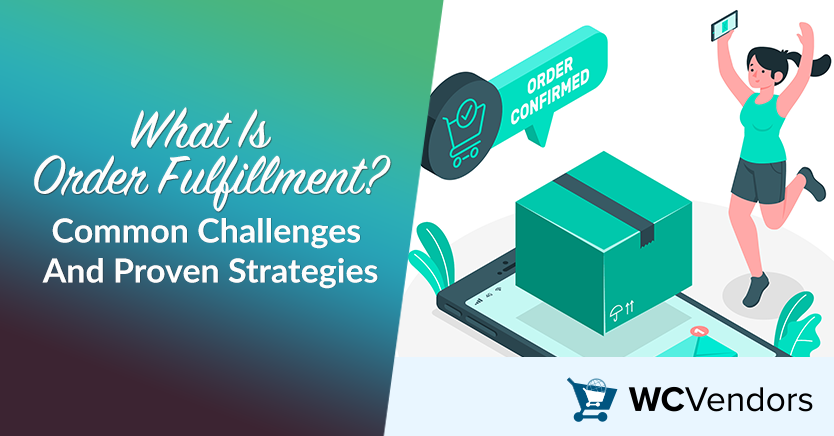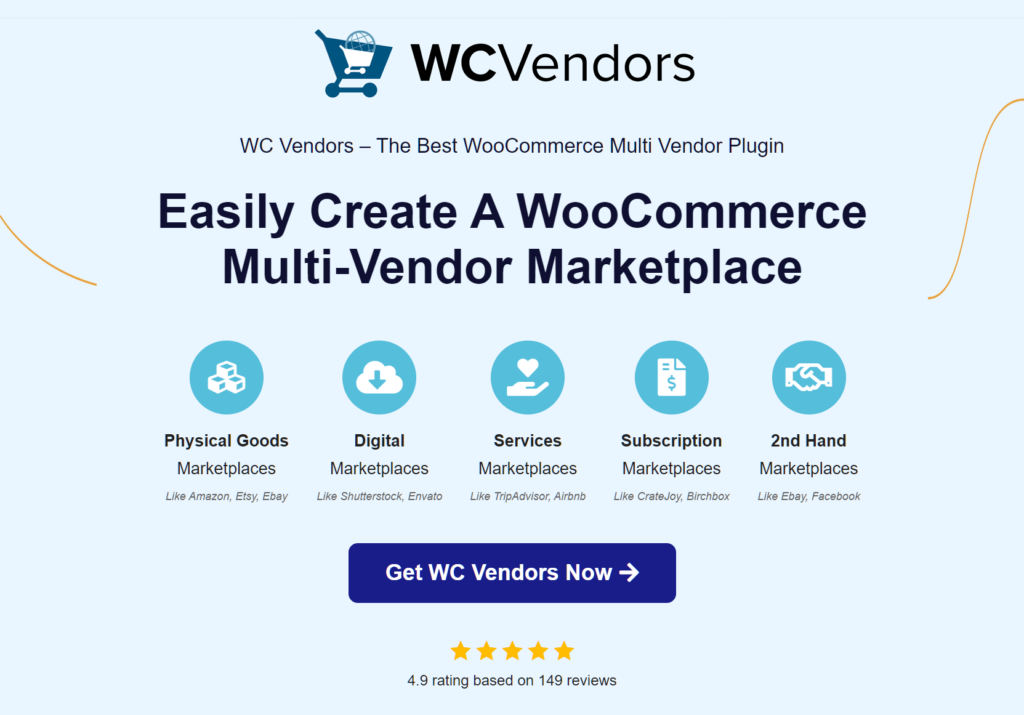
Struggling with getting orders delivered on time? Let’s talk about what is order fulfillment and why it’s essential for multivendor marketplaces.
Keeping customers happy and vendors satisfied depends on a smooth process, but challenges like stock shortages, shipping delays, and miscommunication can complicate things—especially during busy seasons.
In this article, we’ll share practical tips to overcome these hurdles and explore how WC Vendors can help streamline order fulfillment for your marketplace.
Let’s get started!
Why Order Fulfillment Matters

What is order fulfillment? It’s the process of receiving, processing, and delivering orders to customers. However, it’s more than just shipping products—it’s also about meeting your marketplace’s promises. Smooth fulfillment leads to:
- Customer retention: Satisfied customers are more likely to return. Check out our customer retention strategies for actionable tips.
- Vendor trust: Vendors depend on your marketplace to process orders smoothly. This is even more important during busy times, like seasonal sales or flash deals. Learn more about flash sale strategies.
Common Order Fulfillment Challenges In Multivendor Marketplaces
Order fulfillment in multivendor marketplaces isn’t always straightforward. With multiple vendors handling different aspects of the process, challenges can quickly arise.
Spotting and fixing these problems is key. It helps keep customers happy and your marketplace running smoothly. Here are some common order fulfillment challenges you might face:
1. Inventory mismanagement
Vendors may oversell or forget to update stock levels in time. For example, a vendor might list 10 items but only have 5 in stock. When customers place orders for more than what’s available, it can lead to cancelled orders and upset buyers.
2. Shipping delays
Vendors may struggle with shipping during busy times. For example, a vendor might face delays during back-to-school sales when courier services are overloaded. This can cause late deliveries, frustrating customers who need their orders on time.
3. Lack of communication
Poor coordination can lead to problems. For instance, a vendor might not inform the admin about a product being out of stock. The admin then processes an order, and the customer ends up receiving the wrong item or waiting longer than expected. This can harm the marketplace’s reputation.
4. Custom orders

Personalized products can complicate fulfillment. For example, a vendor selling customized mugs might delay shipping because they didn’t confirm the design with the customer on time. This leads to frustration and late deliveries. Proper communication and clear workflows are essential to avoid such issues.
5. Inconsistent packaging standards
Vendors may use different types of packaging, like flimsy boxes or improper padding, for fragile items. For example, a vendor selling glassware might ship products without enough bubble wrap. This could lead to items arriving broken, disappointing the customer. A lack of uniform packaging guidelines can harm the marketplace’s reputation.
6. Returns and exchanges
Managing returns can get tricky when vendors have different policies. For example, one vendor might accept returns for 30 days, while another allows only 15 days. A customer returning items from two vendors in one order could face confusion or delays. This creates extra work for admins and may frustrate the customer.
7. Inaccurate order information
Mistakes in product details or pricing can cause big problems. For example, a vendor might list a product as “in stock” when it’s actually sold out. A customer could place an order only to find it canceled later. This could lead to frustration, refunds, and even negative reviews for your marketplace.
8. Peak season overload

During Black Friday, a vendor might receive triple the usual number of orders. They could struggle to pack and ship everything on time. Meanwhile, the shipping provider could face delays due to high volumes. This can result in late deliveries, frustrated customers, and strained vendor relationships.
Spotting these challenges early helps you take action before they become bigger problems. With tools like WC Vendors, you can set up strategies to fix and manage them easily.
Strategies To Overcome Fulfillment Challenges
Order fulfillment challenges can be addressed with the right strategies and tools. When you focus on key areas, you can create a smoother experience for customers, vendors, and admins. Here are some strategies to consider:
1. Create standardized packaging guidelines
Provide vendors with clear packaging standards to reduce product damage during transit. This ensures a consistent and professional experience for customers.
2. Encourage vendors to use bulk shipping options
For vendors with high order volumes, suggest bulk shipping solutions. This can save time and reduce costs, especially during busy seasons.
3. Establish a clear returns and refund process

Work with vendors to standardize return policies. This helps avoid confusion and ensures smooth handling of returns and refunds.
4. Offer vendor training resources
Provide tutorials or training sessions on using marketplace tools effectively. This empowers vendors to manage orders and inventory more efficiently.
5. Enable notifications for order updates
Automated notifications keep vendors and customers informed about order progress. This reduces miscommunication and builds trust.
6. Monitor vendor performance regularly

Use analytics to review vendor fulfillment times and accuracy. Offer feedback and support to vendors who may need help improving their processes.
7. Simplify customer support for vendors
Provide vendors with templates or guides for responding to common customer queries. This ensures consistent and timely responses.
7. Implement customer feedback loops
Collect and share customer feedback with vendors. This helps identify areas for improvement and boosts customer satisfaction.
How WC Vendors Simplifies Order Fulfillment

WC Vendors is packed with features that simplify order fulfillment for both admins and vendors. It helps streamline processes, reduces mistakes, and keeps everyone on the same page. Whether it’s tracking orders or managing inventory, WC Vendors ensures your marketplace runs smoothly.
- Centralized order management: Admins can view and manage all orders directly from the WordPress dashboard. They can sort orders by vendor or status, making it easier to stay organized.
- Automated notifications: Vendors receive real-time updates about new orders, ensuring they act promptly.
- Integration with WooCommerce shipping plugins: Vendors can use shipping plugins to calculate costs, print shipping labels, and track packages. This makes shipping easier and faster.
- Customizable vendor dashboards: Vendors can manage everything in one place. They can update stock levels, check order statuses, and even communicate with customers directly from their dashboard.
Conclusion
If you’re still wondering what is order fulfillment, it’s not just about delivering products. It’s about ensuring a smooth experience for both customers and vendors. When you tackle common challenges and using the strategies we’ve shared, you can keep your marketplace running efficiently and hassle-free.
Here’s a quick recap to guide you:
- Why Order Fulfillment Matters
- Common Order Fulfillment Challenges in Multivendor Marketplaces
- Strategies to Overcome Fulfillment Challenges
- How WC Vendors Simplifies Order Fulfillment
Start applying these strategies today to elevate your marketplace’s operations. Have more tips or questions about fulfillment? Send us a message!
Let’s create a marketplace experience that stands out for vendors and customers alike.
